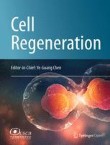Cell Regeneration is the official journal of the Chinese Society for Cell Biology
The emerging and diverse roles of F-box proteins in spermatogenesis and male infertility
F-box proteins play essential roles in various cellular processes of spermatogenesis by means of ubiquitylation and subsequent target protein degradation. They are the substrate-recognition subunits of SKP1–cu...

